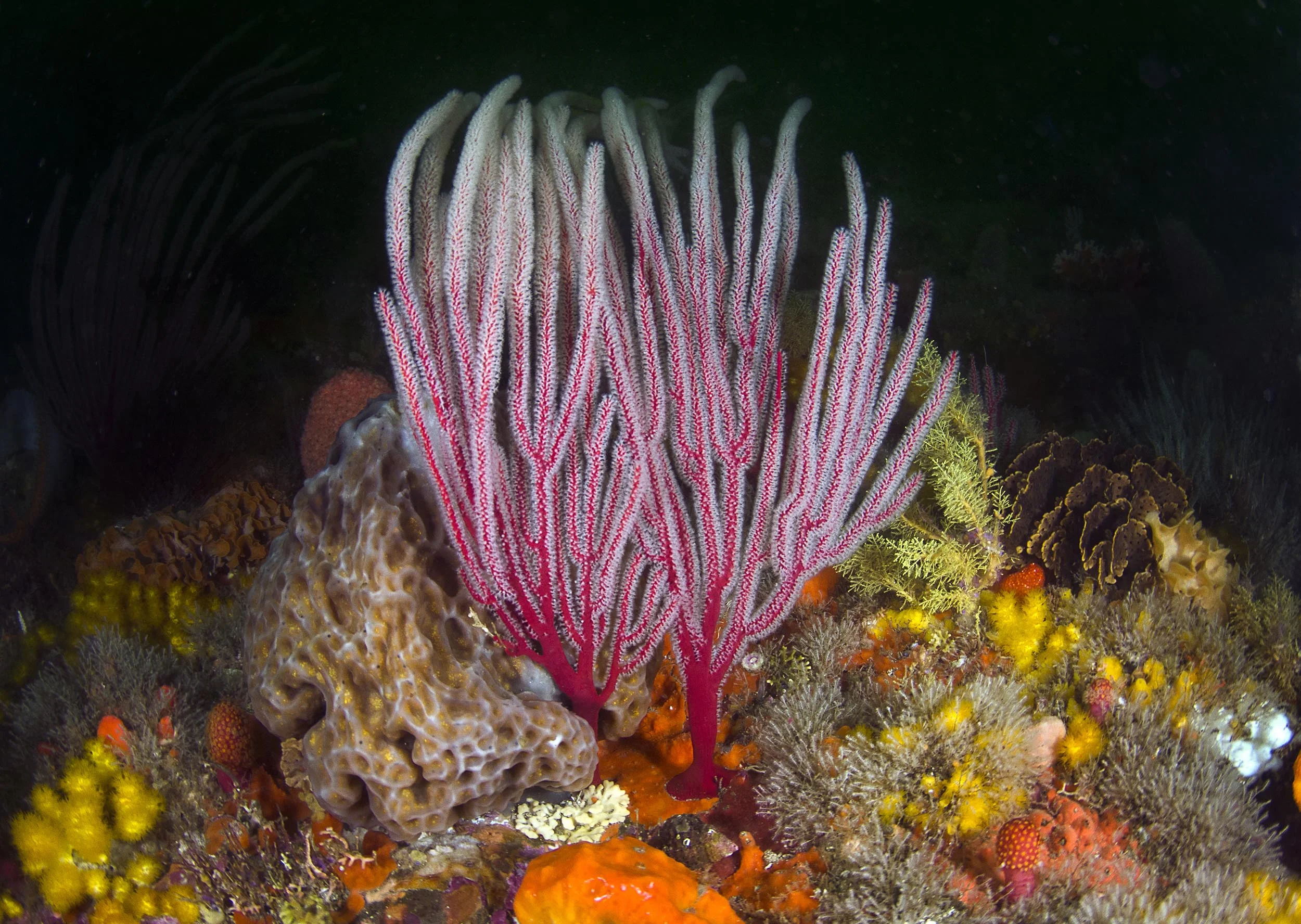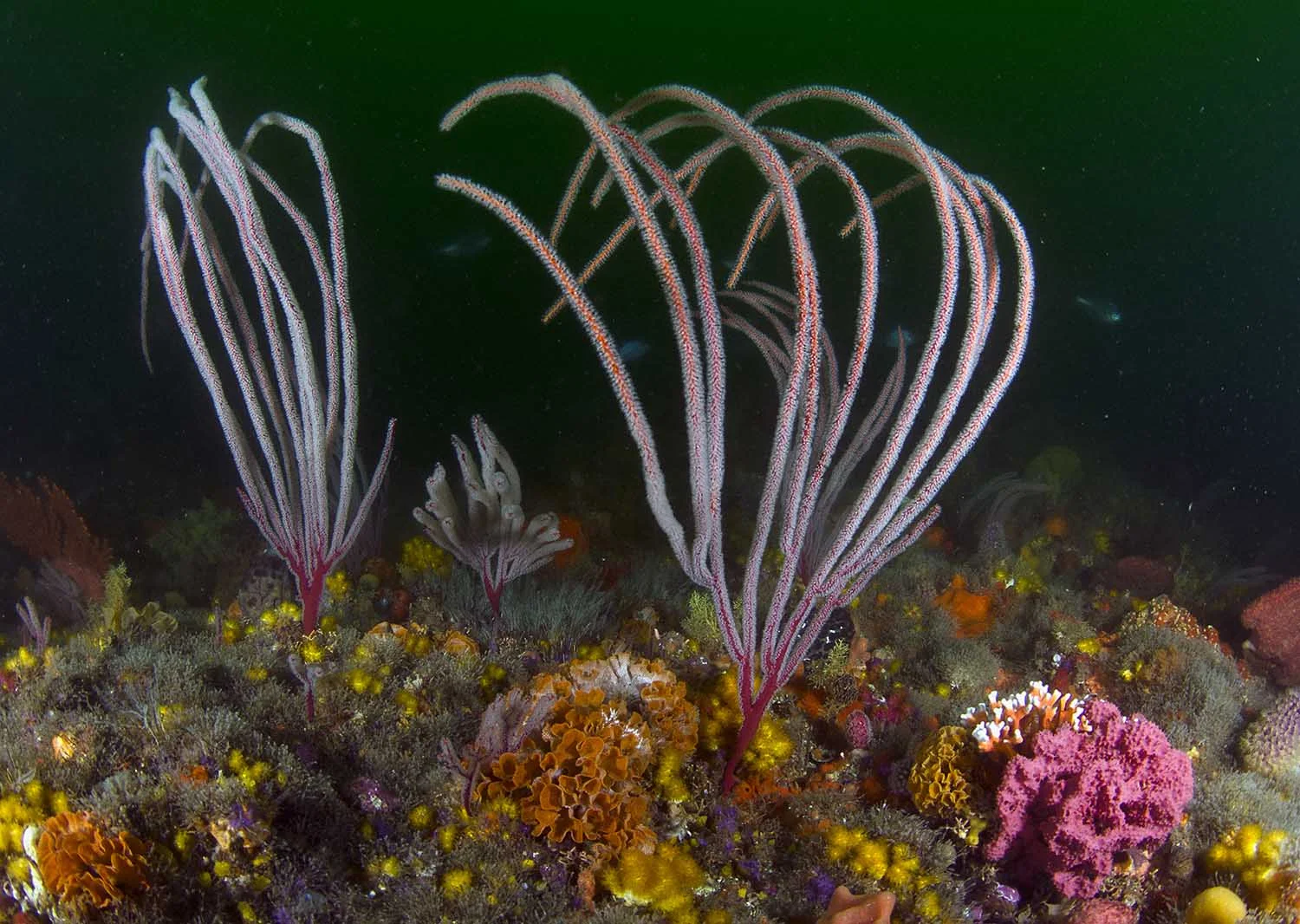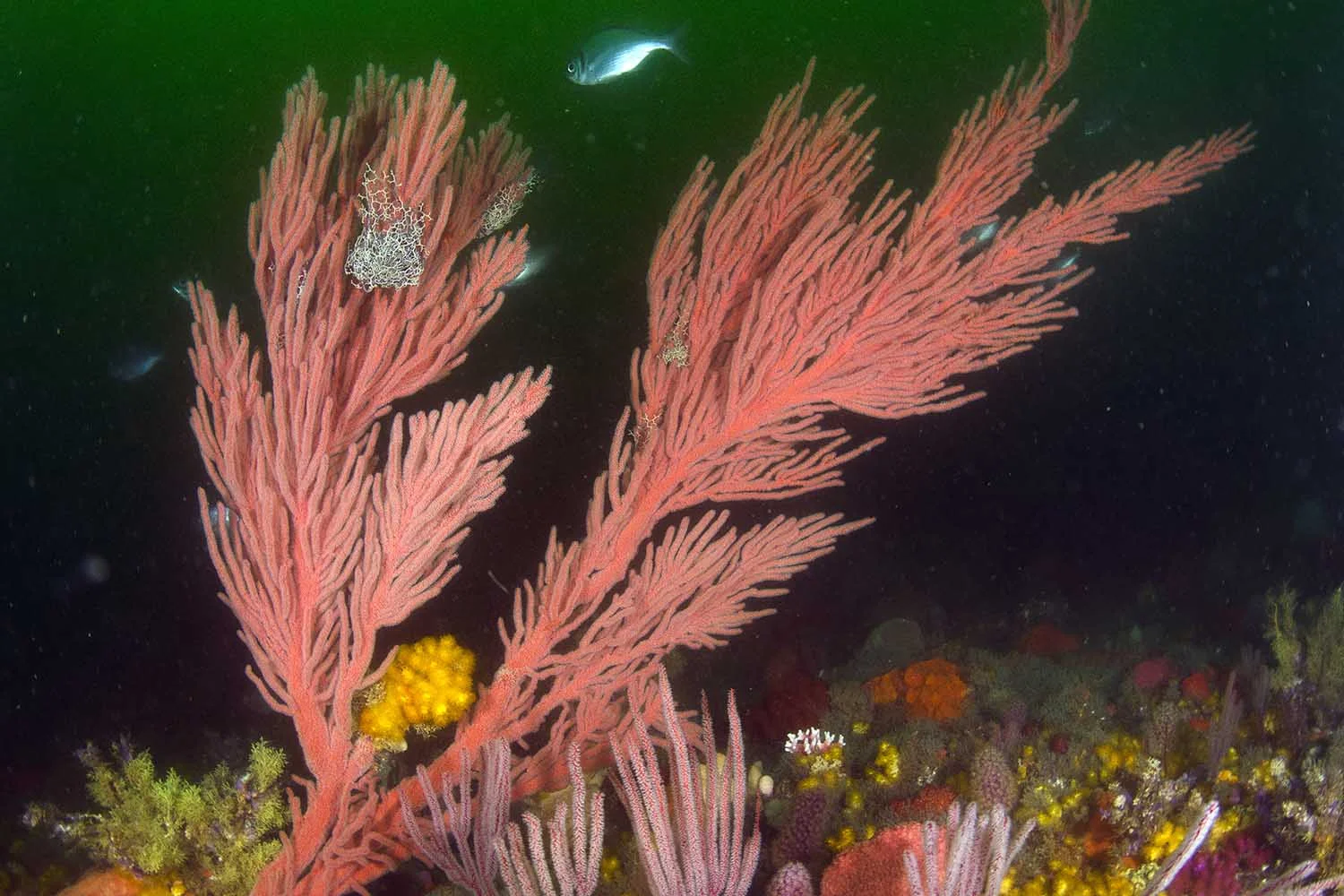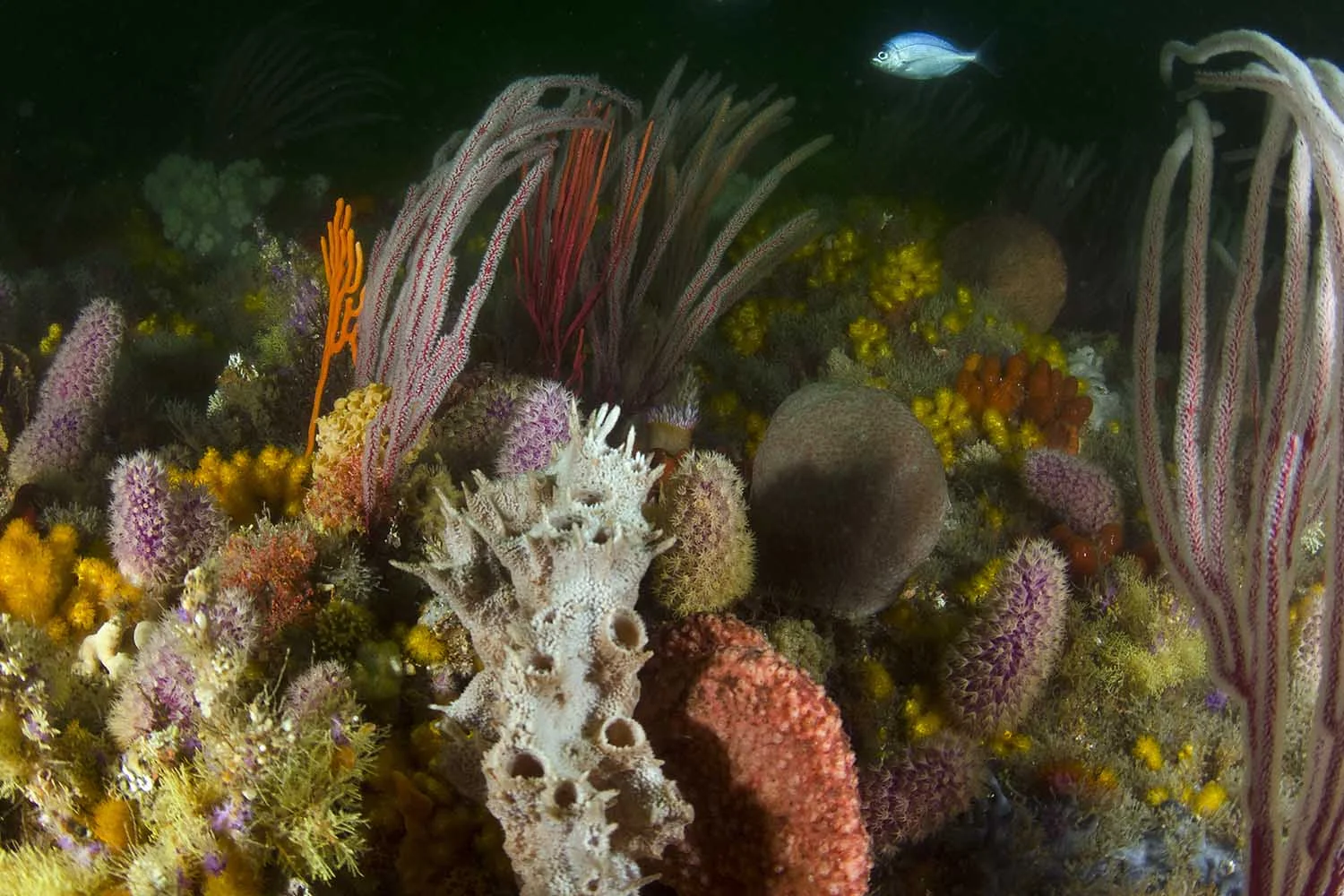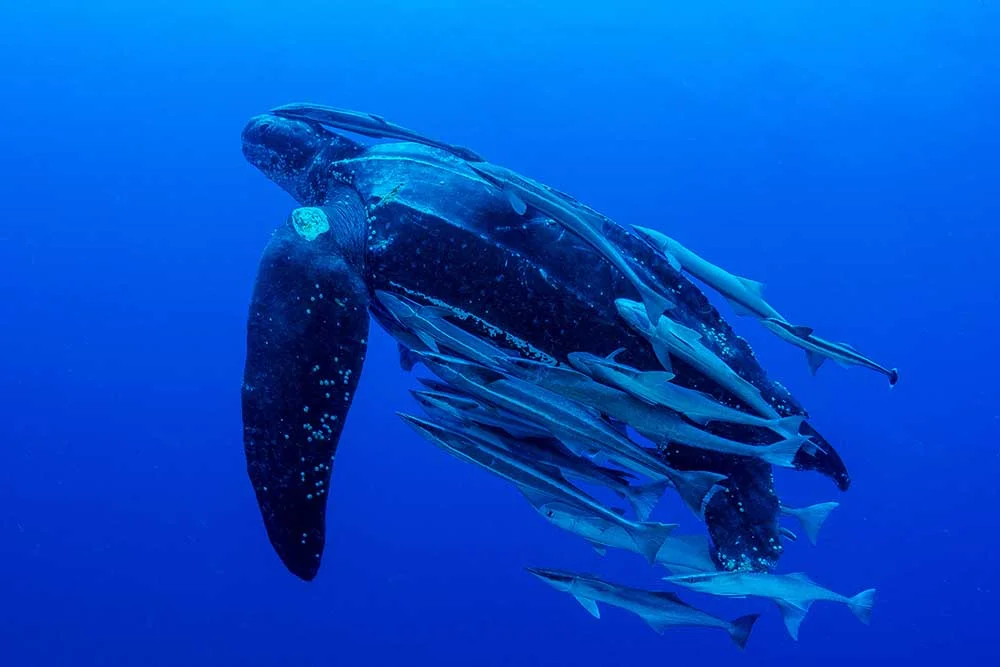tsitsikamma MPA
"THE HEART OF mpas"
Garden Route, Eastern Cape
Established in 1964, Tsitsikamma is the oldest MPA in Africa and a treasure trove of marine life.
This 294 km2 MPA is a valuable national asset due its long-term protection. For over 50 years it has protected healthy intertidal and subtidal habitats and their associated marine communities and species. The MPA extends from Groot Rivier East (near Eerste Rivier) to Groot Rivier West (near Nature’s Valley), a length of approximately 60 km and it stretches 5.6 km out to sea. This wild stretch of coastline is characterised by dramatic cliffs and rugged rocks, backed by forests home to ancient yellowwood trees and fynbos grasslands. The MPA was established to protect the rich diversity of marine life found in the area including algae, invertebrates and fish. The area is important as it protects a high proportion of endemic species characteristic of the warm temperate Agulhas Ecoregion. A large number of linefish species, which are heavily overexploited elsewhere are protected within this MPA including roman, dageraad and red steenbras. The high cliffs and rough seas characteristic of this spectacular coastline has meant that this area has been a de factor MPA as it has always been difficult for fishermen to access and this was one of the reasons it was proclaimed as an MPA. Although it was initially proclaimed in 1964, changes to regulations were made in 2000 and 2016. The area supports many birds including seabirds such as Cape cormorants, terns, kelp gulls and oystercatchers but the Knysna turaco and African finfoot are also special birds often seen in the coastal forest and estuary. Humpback and southern right whales pass through the MPA, while pods of bottlenose and humpback dolphins are often seen in the waves. Tsitsikamma is also famous for the Cape clawless otter which may sometimes be seen frolicking in the breakers. As the oldest MPA in Africa, the pristine ecosystems of the park provide an important reference area that scientists use to understand change in marine ecosystems. The MPA is the marine equivalent of the Kruger National Park and is a major tourist attraction. Thousands of local and international tourists visit the area each year, and the popular Otter Hiking Trail is booked years in advance. This MPA is managed by South African National Parks and the entire MPA is a no-take area, except for 20% of the shoreline where local community members are permitted to fish.
BENEFITS
protects endemic fishes and allows for spillover into adjacent areas
Provides valuable benchmark for scientists to study healthy fish stocks
preserves unique coastline that attracts tourists



















